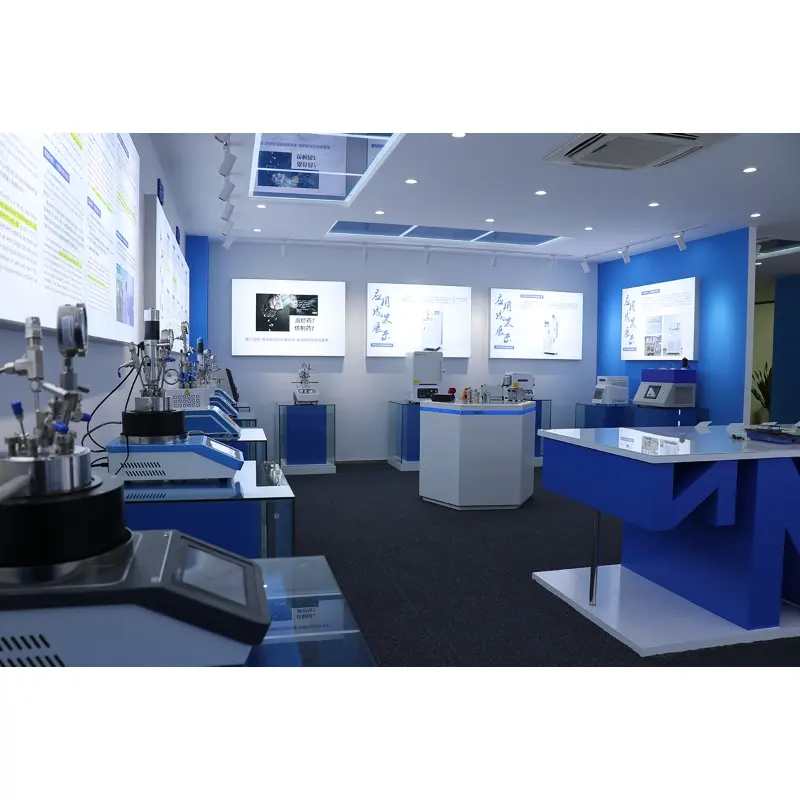Table of Contents
Laboratory autoclave reactors, also known as pressure reactors or hydrothermal reactors, play a crucial role in facilitating chemical reactions under high pressure and temperature conditions. These specialized devices are widely used in research, development, and industrial applications, offering precise control over reaction conditions. In this article, we explore the different types of autoclave reactors, their applications, safety protocols, and maintenance requirements.
What Are the Different Types of Laboratory Autoclave Reactors?
Laboratory autoclave reactors come in several configurations, each designed for specific reaction needs. Here’s a closer look at the different types:
Batch Reactors
Batch reactors are the most common type used in laboratories. These reactors process a single batch of reactants at a time, making them versatile for various experimental setups. They can be categorized based on the materials used and the presence of stirring mechanisms, allowing for different mixing and temperature control options.
Continuous Flow Tubular Reactors
In continuous flow tubular reactors, reactants flow through a heated and pressurized tube, allowing the reaction to occur under steady-state conditions. These reactors are ideal for studying reaction kinetics and for processes that require continuous production, such as chemical manufacturing.
Stirred Reactors
Stirred reactors are equipped with an agitator or stirrer, which ensures uniform mixing of the reactants. This is particularly important for reactions like polymerization and crystallization, where consistent interaction between components is required for optimal results.
Hydrothermal Autoclave Reactors
Hydrothermal reactors are specifically designed for reactions in aqueous solutions at high temperatures and pressures. These reactors often feature an inner liner made of materials like Polytetrafluoroethylene (PTFE) or PPL, which resist corrosion from acidic or alkaline solutions. PTFE-lined reactors can safely operate at temperatures up to 200°C, while PPL-lined reactors can handle temperatures as high as 260°C.
What Are the Common Reactions and Applications for Autoclave Reactors?
Autoclave reactors are used in various scientific fields, ranging from chemical synthesis to environmental testing. Here are some of the key applications:
Chemical Synthesis
Autoclave reactors are essential tools for optimizing reaction conditions in chemical synthesis. They enable the production of a wide variety of chemical compounds, including pharmaceuticals, polymers, and specialty chemicals. High pressure often speeds up reactions, improves yields, and enhances the selectivity of products.
Material Science
In material science, autoclave reactors are used to synthesize advanced materials such as nanomaterials (e.g., carbon nanotubes, quantum dots) and crystalline structures. Hydrothermal synthesis, which involves conducting reactions in hot, pressurized water, is a common method for producing these materials.
Petrochemical Industry
Autoclave reactors are vital for processes like hydrocracking and hydrogenation in the petrochemical industry. These processes, which involve breaking down hydrocarbons and adding hydrogen, require precise control over pressure and temperature to produce valuable fuels and chemicals.
Environmental Science
In environmental science, autoclave reactors are employed to test water samples, study the effects of pollution, and evaluate the environmental impact of various chemicals. They help simulate conditions that mimic real-world environmental stressors.
What Safety Precautions Should Be Taken When Using Autoclave Reactors?
Due to the high pressures and temperatures involved in autoclave reactor operations, it is essential to follow strict safety protocols. Here are some important safety measures:
Personal Protective Equipment (PPE):
Always wear appropriate PPE, including a lab coat, eye protection, and heat-resistant gloves, when loading or unloading the reactor. This ensures protection from burns, chemical splashes, and high-temperature steam.
Proper Loading:
Ensure that the reactor is not overloaded. Leave enough space for steam to circulate and avoid overfilling containers with liquids. Ideally, liquid containers should not be filled more than 75% of their capacity. Additionally, use a heat-resistant secondary container to catch spills.
Safe Operation:
Never open the reactor door while it is under pressure. Wait for the pressure to drop to zero and the temperature to cool down before opening. Always stand back when opening the door to allow steam to escape gradually.
Material Compatibility:
Use only materials and glassware rated for the specific pressure and temperature conditions of the reactor. Do not autoclave reactive, flammable, toxic, or corrosive chemicals, as these could lead to dangerous reactions.
How Should Autoclave Reactors Be Maintained?
Regular maintenance is essential to ensure the safe and effective operation of autoclave reactors. Follow these maintenance guidelines to keep the reactor in optimal working condition:
Routine Cleaning:
Clean the interior and exterior surfaces of the reactor after each use. Pay close attention to the liner and seals, as residue buildup can affect future reactions and damage the equipment.
Seal and Gasket Care:
Regularly inspect gaskets and seals for wear or damage. Replace them as needed to prevent pressure leaks and ensure the reactor maintains a safe operating environment. Ensure all sealing surfaces are clean before closing the reactor.
Calibration and Monitoring:
Regularly calibrate temperature and pressure gauges to ensure accurate readings. During reactor operation, monitor these parameters for any unexpected fluctuations, which could indicate a malfunction or an unsafe condition.
Professional Servicing:
Have the reactor serviced by a qualified technician on a regular basis, typically annually. Inspections should include critical components like heating coils, safety valves, and electrical systems. Keeping a detailed log of maintenance and repairs is essential for tracking the reactor’s performance.
Conclusion
Laboratory autoclave reactors are indispensable tools for conducting high-pressure and high-temperature chemical reactions. Their versatility across various applications, from chemical synthesis to environmental testing, makes them invaluable in many scientific disciplines. By following proper safety measures, performing regular maintenance, and understanding the different types of reactors, researchers can ensure the safe and efficient operation of these powerful devices.

